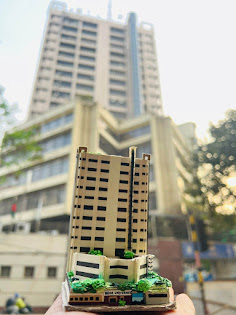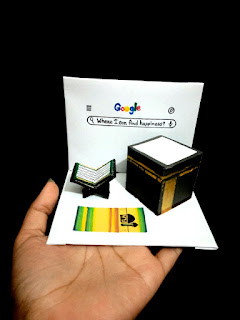Miniature: Waste Turns into Best
- Nazifa Zafrin Ahona

Miniature, A copy or model that represents or reproduces something in a greatly reduced size. Miniatures are widely used in the architecture field, in the name of ‘Scale Model’.
The use of miniature models dates back thousands of years to ancient civilizations such as the Egyptians and Greeks, who created small-scale models of buildings, animals, and other objects for religious and artistic purposes. In the Middle Ages, miniature models were also used for religious purposes, such as miniature altars, and were popular among wealthy families as a form of status symbol. These models were often made from precious materials such as ivory, gold, and silver. During the Renaissance, miniature models became popular among artists and architects as a way to plan and visualize their designs before building them on a larger scale. Leonardo da Vinci, for example, was known for creating detailed miniature models of his inventions. In the 19th century, miniature models became more widely available to the general public, and were used as educational tools to teach about science, engineering, and architecture. Today, miniature models are still used for a variety of purposes, including as toys, collectibles, and as part of architectural and engineering design processes. They are often made from a wide range of materials, from plastic and metal to wood and paper.
But materials for these models might be too costly for people to afford, so what else can be done? We can make miniatures using waste things. Making these out of waste materials can be a fun and creative way to reuse items that might otherwise end up in the trash.
We all are familiar with the thing named ‘Carton box’, aren’t we? They are really useful while transporting things such as fragile things that are made of glass. But after finishing transportation? We throw these carton boxes. Little do we know, if we want, we can transform these waste into best craftworks such as miniatures.
Steps we can follow while doing the process,
Firstly, gather materials: Look for items that can be used to create model, such as cardboard, plastic bottles, bottle caps, paper clips, straws, or any other items can be find around. Secondly, designing plan: Decide what we want to make and draw out a plan or blueprint for the model. Thirdly, cut and shape your materials: Use scissors, knives, or other cutting tools to shape your materials into the right size and shape for your design. And then assemble the model, using glue, tape, or other adhesive to put your model together, following your plan or blueprint. Add details: Once your model is assembled, add details such as paint, markers, stickers, or other decorations to make it look more realistic.
So, how I make a miniature using these waste things? From my view, what I do is simply think of a building or structure I wanna build up. And then I observe that building very keenly. Then I build the basic structure with these waste cardboards, and then I paint it with acrylic colors. After then, I work on detailing.
Let me share my journey of creating a miniature of BRAC University.
When the idea of creating this came into my mind, I immediately looked for some detailed photo of the UB1 and UB2 of BRACU. After finishing keen observation, I made a rough sketch of the building, and used these waste cardboards to build the structure, painted it and did the detailing.
Similarly, I created some more miniatures using these waste things.



So now, you might think, why just miniatures, there are plenty of other things we can do. Yes, it's correct. There are thousands of ways how we can turn our wastes into bests. Here are some of my works where I used waste materials.
Creating these miniatures made me realize that it's not only just an artwork or a show piece, but also it portrays emotions. As till now all of my works were on different institutions, it touched many people from the core of their heart.
And it has several benefits, both for the environment and for your own personal satisfaction. Such as:
Reducing waste: By using waste materials to create your miniature models, you are reducing the amount of waste that would otherwise end up in landfills or polluting the environment.
Cost-effective: Making miniature models out of waste materials is often much cheaper than buying new materials, which can save you money in the long run.
Creativity: Using waste materials to create miniature models can encourage creativity and imagination, as you have to think outside the box to come up with unique designs. Education: Creating miniature models out of waste materials can be a great way to teach children about recycling and environmental conservation, as well as basic construction and engineering principles.
Fun and rewarding: Making something with your own hands can be a satisfying and rewarding experience, and creating miniature models out of waste materials can be a fun way to spend your free time while also helping the environment.
Overall, creating miniature models out of waste materials is a great way to reduce waste, save money, and engage your creativity, while also teaching important lessons about sustainability and environmental responsibility.
And this is how I perceived it, recycling these wastes can be a beautiful outcome of bests.








.jpg)

Comments
Post a Comment